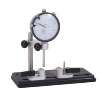ironworkerwill
Member
I have both Lee and RCBS seat dies and both work ok.
From time to time I will notice the bullets will seat a bit canted, esp with flat based bullets.
I do the ol' roll test to visually pick out the wobblers.
I've been taking the cap off the Lee die and starting the bullet in from the top. It seems to help.
Do any of you gents recommend either the RCBS, Redding, or another brand of comp dies to help eliminate my problem?
Also, I would like to learn the method of alignment each die uses.
From time to time I will notice the bullets will seat a bit canted, esp with flat based bullets.
I do the ol' roll test to visually pick out the wobblers.
I've been taking the cap off the Lee die and starting the bullet in from the top. It seems to help.
Do any of you gents recommend either the RCBS, Redding, or another brand of comp dies to help eliminate my problem?
Also, I would like to learn the method of alignment each die uses.





